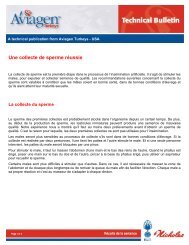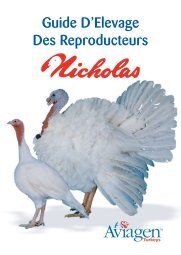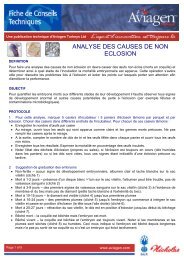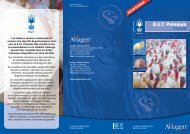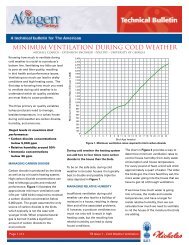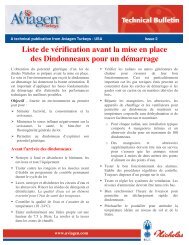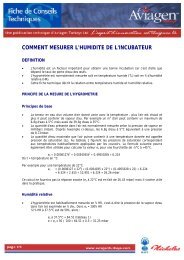Feeding Guidelines for Nicholas and B.U.T. ... - Aviagen Turkeys
Feeding Guidelines for Nicholas and B.U.T. ... - Aviagen Turkeys
Feeding Guidelines for Nicholas and B.U.T. ... - Aviagen Turkeys
Create successful ePaper yourself
Turn your PDF publications into a flip-book with our unique Google optimized e-Paper software.
Feed Density<br />
The recommended schedules split the turkeys life into seven phases.<br />
The objective is to provide the optimum balance of nutrients <strong>for</strong> the<br />
development of the turkey within that time period.<br />
The guidelines in Table 1 assume a fixed relationship between diet energy<br />
<strong>and</strong> nutrient levels in each phase. The decision on what energy density<br />
should be used needs to take into account several factors:<br />
• Economics<br />
- current <strong>and</strong> future prices <strong>for</strong> feed <strong>and</strong> feed ingredients<br />
- current <strong>and</strong> future prices <strong>for</strong> sales of the meat <strong>and</strong> products<br />
• The objectives of the company or farmer<br />
- lowest cost of liveweight production<br />
- least cost deboned breast meat<br />
- maximised yield from the facilities<br />
- lowest FCR<br />
• Health status of the turkeys<br />
- in areas of high disease challenge higher density nutrition can help<br />
to support the turkeys during periods of risk.<br />
- in periods of enteric upset a lower density ration can reduce<br />
diarrhoea problems.<br />
• Weather conditions<br />
- in hot weather feed intake may be reduced with a consequence of<br />
lower weights or meat yields.<br />
PAGE 4




